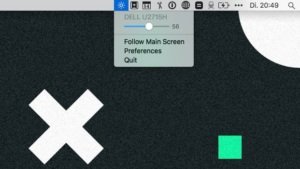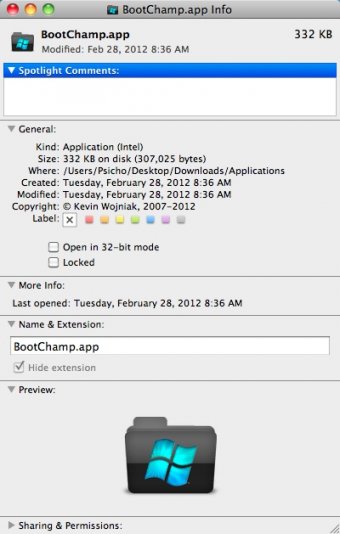

Choose Apple menu > System Settings, click General in the sidebar, then click Software Update on the right. Once the partition tool is finished, your Mac should reboot, and the Windows installer should start automatically from your USB drive. On your Mac, log in as an administrator, quit all open apps, then log out any other users.
BOOTCHAMP OSX INSTALL
Step 1: Check for software updates Before you install Windows, install all macOS updates. To do this, head to the Startup Disk preference setting in Settings.Įvery time the Mac starts, you can also toggle between OS X and Windows by holding down the Option (Alt) key immediately upon startup. Perform the installation Do the following steps in order. Once you have Windows installed, you can set the default OS that will start each time you boot your Mac.
BOOTCHAMP OSX WINDOWS 10
The originally released version of Windows 10 was number 1511. Generally these are the 2012 and later models. Apple officially supports Windows 10 on the newer Macs. Select 'Download Windows Support Software'. Set the Default Startup OS or Toggle Between OS X and Windows Open the Boot Camp Assistant application. The Mac will need to restart to complete the process and will automatically boot into Windows 10 when it's done. Follow the prompts to finish installing Windows. If you ever need to edit it, you can right click the application, click show package contents, navigate to Contents, Resources, Scripts, and double click main.scpt, and it will open it in the scripts editor for editing.7. In the left, click desktop, so it saves it there.Īt the bottom, change the file format to Application so that it runs when clicked instead of opening.
BOOTCHAMP OSX PASSWORD
Set doRestart to button returned of askRestartĭo shell script "bless -mount /Volumes/BOOTCAMP/ -legacy -setBoot -nextonly shutdown -r now" password adminpass with administrator privilegesĪfter this, go to file, export- name the file whatever you want- ex. Set askRestart to display dialog "Restart in Windows?" buttons default button 1 with icon iconPath Set iconPath to (get name of startup disk) & ":Applications:Utilities:Boot Camp Assistant.app:Contents:Resources:DA.icns" as alias Leave everything like it is except for the line that says set adminpass to "****" - change the asterisks ( * ) to your password. all you have to do is double click it and it will automatically do everything for you. Make sure you change the password to yours though. I have tested it on Mojave and it works fine So yes there is a free option, and unlike Paragons paid version it does not wreck your bootcamp partition/NTFS file system. Which is a script that will restart the computer into windows. UFS Explorer (standard version) is free but will only allow you to read or copy to your Bootcamp Partition from the APFS one. I feel that the easiest way to do this is by opening up Script Editor. You can save that as part of a shell script or use Platypus to create an actual runnable application that will run the shell script for you.Īdditionally there are other options listed on MacOSXHints Tell application "System Events" to restart' &

#Then a slightly cleaner restart than shutdown -r (which sends a kill message) #You could use -folder but this assumes the drive is always mounted and writeable Sudo bless -device /dev/disk#s# -legacy -setBoot
So change the '#'s in the following command to the appropriate numbers: sudo umount /Volumes/NAME_OF_YOUR_WINDOWS_DRIVE Two - You'll need to find out the disk ID by running df -k - more than likely it is /dev/disk1s3 if you have partitioned your hard drive but you'll want to double check. One - when you restart you can hold the 'Option' key down and then choose Boot Camp - however this is a temporary selection so if you restart again it will start back up in OS X (or whatever the selected startup disk actually is).


 0 kommentar(er)
0 kommentar(er)
